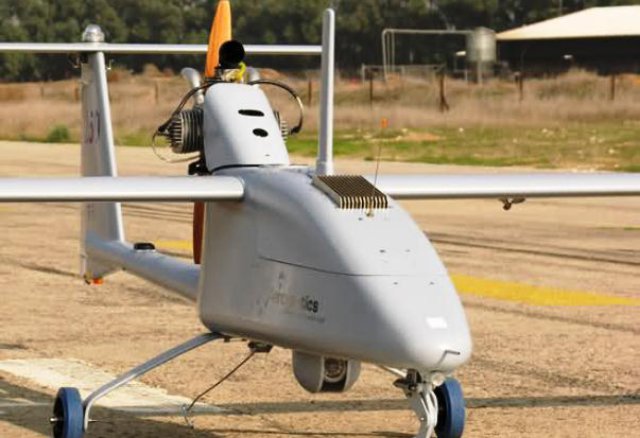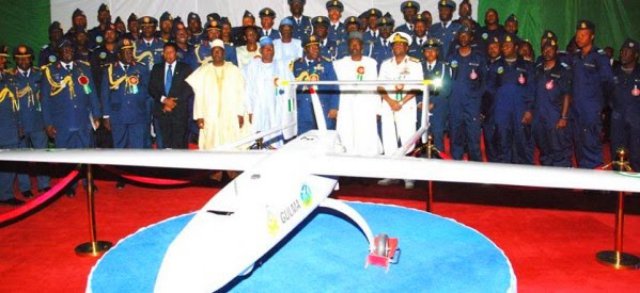In December 2013, President Goodluck Jonathan, in the capital city of Kaduna, unveiled the first Nigerian made unmanned aircraft system, named ‘Gulma’ meaning ‘gossip’ in the local Hausa language. It was produced by the Nigerian Air Force Institute of Technology (AFIT) with the help of aerospace engineers from Cranfield University in Britain.
Since 2007, the British institution has partnered the AFTI as part of the Nigerian government’s bid to develop an in-house capacity for advanced aviation design, research and development. Powered by a 17 hp engine, the Gulma is built on a composite aluminium alloy structure, operates via radio control on a Micro Pilot FCS avionics system and weighs 40 kilogrammes.
 It has a maximum cruise range of 923 km and a top flight speed of 86 knots. It can cruise at a maximum altitude of 10 000 feet and has an endurance of up to 5.8 hours. The AFIT team has so far trained 15 pilots to operate its growing fleet of unmanned aerial vehicles.
It has a maximum cruise range of 923 km and a top flight speed of 86 knots. It can cruise at a maximum altitude of 10 000 feet and has an endurance of up to 5.8 hours. The AFIT team has so far trained 15 pilots to operate its growing fleet of unmanned aerial vehicles.
In his speech at the unveiling ceremony, Jonathan said that as the country continues to witness breakthrough in technology at various sectors, it was imperative to appreciate the fact that Nigeria has potential to do great things, charging Nigerians to continue to explore all available areas that could take the country to greatness.
Showering accolade on the military for the fit, Jonathan said the importance of the newly unveiled project was enormous.
Speaking further, the president affirmed that, “We must not forget the lesson of this encouraging moment in our nation’s history; that as Nigerians, we are capable of great deeds.
“In the same manner, we must not forget that ahead of us still lie challenges that we must surmount. We must, therefore, stay focused on our common national purpose.
“Today marks another landmark moment in our nation’s history, as we gather here to witness the unveiling of our country’s first indigenous unmanned aircraft system, which has been designed and constructed by the Nigeria Air Force.
“Besides its diverse military application, unmanned aerial vehicle provides mankind with a range of benefits in disaster management, power line surveys, law enforcement, telecommunications, weather monitoring, and aerial imaging/mapping.
“It is also rapidly becoming an important tool in news coverage, environmental monitoring, and oil and gas exploration.
“Considering the potential impact of its benefit and versatility, I cannot but say how proud I am of the men and women of our Armed Forces.
“Apart from their commitment to the protection of our sovereignty, they are helping to keep our nation ahead in military science and technology and to keep their civilian counterparts on their toes.”
The Minister of Information, Labaran Maku , who equally oversees the affairs of the Defence Ministry, stated that improved professionalism of the military that started since 1999 had resulted into several technological breakthroughs.
Maku said: “The development of surveillance aircraft by the Nigerian Air Force at this crucial moment in our history is a bold statement of our resolve to provide security for the Nigerian populace.
“The GULMA UAS potentially affords the Armed Forces a window of immense opportunities in its task of acquiring timely intelligence and combating criminality, especially in light of the nation’s prevailing security challenges.”
Also speaking, Air Marshal Alex Badeh explained the name of the surveillance aircraft. He said they arrived at the name because of the several functions of the aircraft which include; intelligence, surveillance and reconnaissance platform. He had disclosed that the project idea was conceived in 2005, praising the military for spending only half of the budget it proposed for the project.
Source: Press Release

